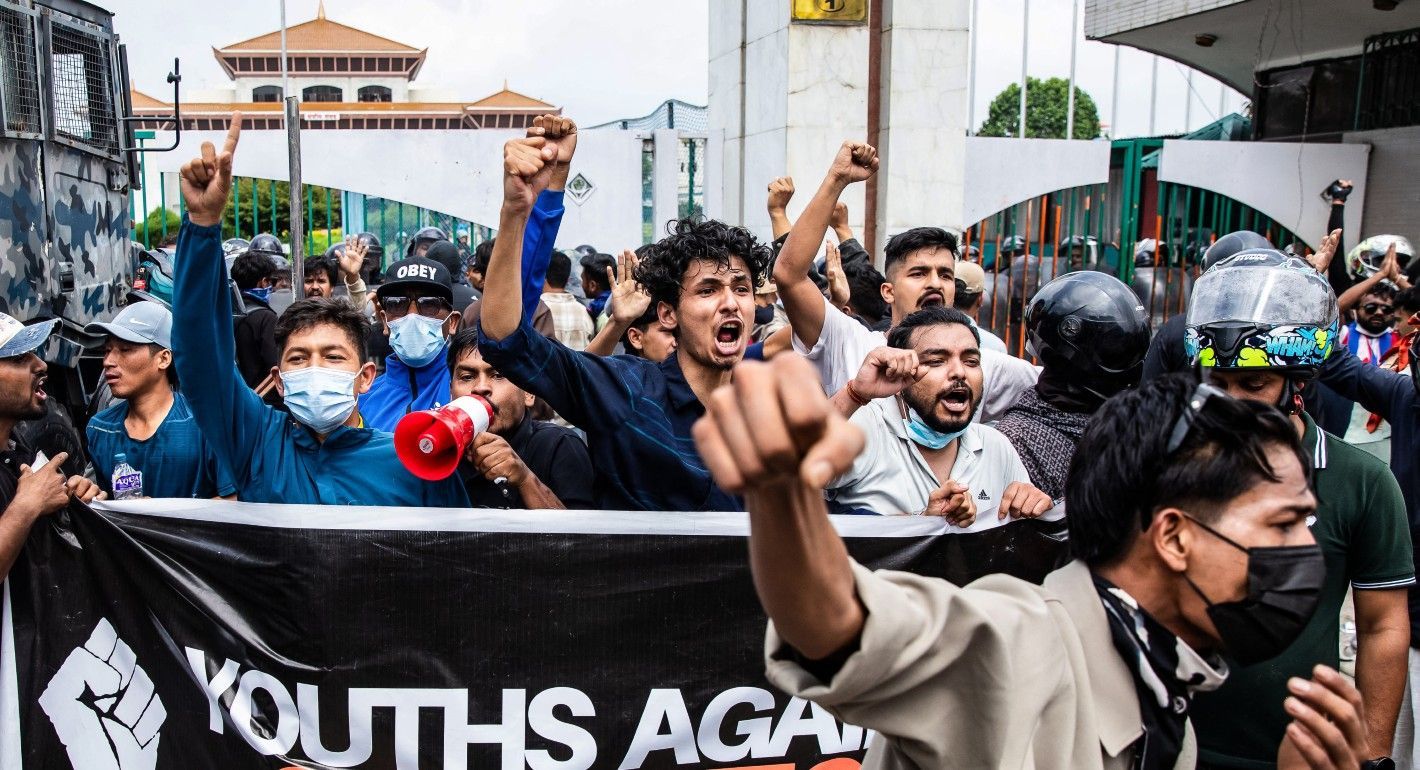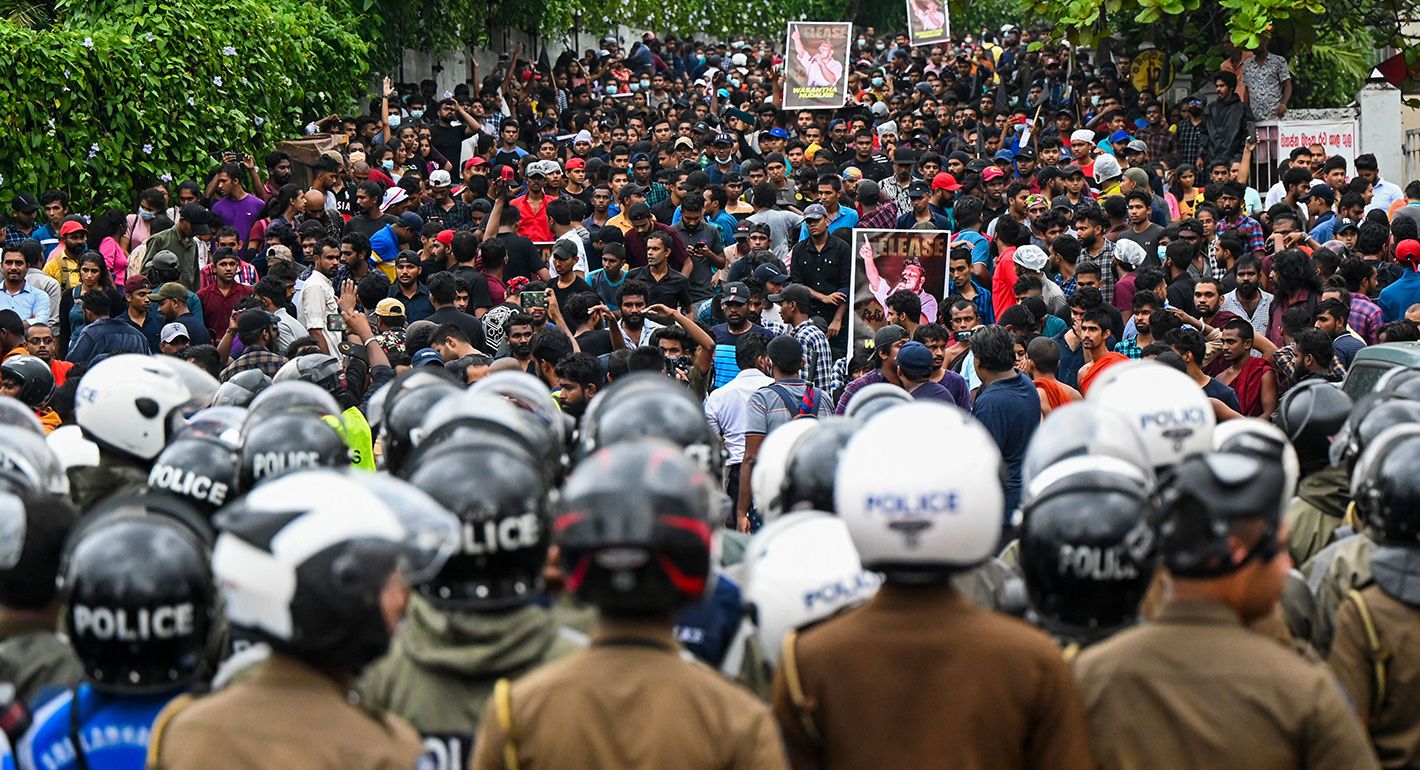Demonstrations spurred by a new generation of Gen-Z activists have roiled the streets of several Asian countries in recent months. Fueled by widening wealth gaps and alleged abuse of power, activists have organized via social media, demanding that their governments address deepening social and economic inequalities.
In Indonesia, protests that erupted in late August were spearheaded by gig workers employed by online delivery and transport platforms in response to welfare cuts proposed by President Prabowo Subianto. Amid rising concerns over the concentration of power in the hands of the armed forces and business oligarchs, public outrage intensified when the government gave members of Parliament housing allowances ten times greater than the minimum wage. In Nepal, similar frustration with entrenched elites drove Gen-Z demonstrators onto the streets. Using the hashtag #nepobabies, they denounced the nepotism and patronage politics that have kept social and economic opportunities confined to the ruling party’s familial and loyalist networks and shut off broader access to public goods and social mobility.
These cases represent the latest chapter in a fifteen-year wave of youth-led protests shaped by digital connectivity—from the Arab Spring (2010–2011) and the global Occupy Wall Street movement (2011) to Europe’s anti-austerity Indignados movement (2011–2012) and Asian prodemocracy protests in Thailand (2020–2021), Sri Lanka (2022), and Bangladesh (2024). Despite contextual differences, these movements share three defining characteristics of social media–driven activism.
First, social media enables young people to share personal experiences of injustice and connect them to broader socioeconomic structures of inequality, abuse of power, and the absence of a secure future. These exchanges generate collective grievances and emotions—not only anger and frustration, but also hope for change. Platform connectivity allows strangers to unite around common causes, forging group identities and solidarities. In Nepal, for instance, protests were fueled by an Instagram post from Saugat Thapa, the son of a provincial minister, posing beside a Christmas tree made of luxury-brand boxes.
The image quickly became a symbol of injustice in South Asia’s second-poorest country—surpassed only by Afghanistan—where post-2008 civil war recovery has stagnated. In 2025, Nepal’s GDP per capita remains below $1,500, and 82 percent of its workforce relies on informal employment (far exceeding global or regional averages). Roughly 14 percent of the country’s 30 million people work abroad, and one in three households depends on remittances. The 2025 Nepal Country Inequality Report attributed persistent inequality to structural hierarchies rooted in caste, class, ethnicity, gender, and religion. Against this backdrop, posts flaunting wealth by “nepo babies” crystallized youth anger, becoming focal points around which young protesters articulated their grievances and demands.
Second, social media provides a space for young activists to exchange tactical knowledge both domestically and across borders, fostering broad learning networks. The #MilkTeaAlliance—a prodemocracy network that emerged online after the 2019 Hong Kong protests and gained further momentum during Thailand’s youth-led demonstrations in 2020— is a prime example. The alliance expanded and became increasingly institutionalized after protests erupted following the 2021 military coup in Myanmar. It now serves as both an online and offline platform for activists across Asia to connect, express solidarity, and share strategies. For instance, Thai protesters adopted the “be water” tactic that was originally used by Hong Kong demonstrators and inspired by Bruce Lee’s martial arts philosophy of adaptability. Through deception and tactical flexibility, protesters would announce planned rallies and venues, only to change them at the last minute via Telegram channels once police cordons were on the move. This tactic helped citizens evade surveillance and arrests.
Third, as online dissent escalates, illiberal and authoritarian regimes often respond with censorship, and in many cases armed repression. Yet internet blackouts and violent crackdowns frequently backfire, sparking even larger mobilizations that threaten regime survival—especially when protesters live stream state violence, amplifying public outrage. This dynamic was evident in Bangladesh, Sri Lanka, Indonesia, and Nepal. In Bangladesh in 2024, the Awami League–led government shut down the internet, weaponized the Digital Security Act to arrest dissidents, and fired live ammunition against student activists, killing 1,400 people. A single image—of Abu Sayed, a student activist shot dead by the police—transformed him into a martyr and convinced many middle-class supporters of the regime to join the protests.
Similarly, in Sri Lanka, Indonesia, and Nepal, the killing of protesters by security forces deepened public anger and resolve, intensified demands for political change, and in some cases led to the ouster of incumbent regimes.
Social media mobilization, however, can be a double-edged sword. Although it strengthens movements through networked connections and agenda amplification, it also exposes activists to structural and tactical vulnerabilities. Gen-Z protesters, for instance, often describe their movements as leaderless, largely because social media decentralizes command and coordination. This lack of a figurehead fosters flexibility and a sense of egalitarianism, but it also leaves movements without sustained organizational structures or clear chains of command. Clear organizational structures are crucial for setting common ground rules—such as avoiding vandalism, preventing infiltration, or containing radical actors. As a result, protests that begin with legitimate grievances yet are heavily reliant on social media algorithms to amplify rage and trigger confrontations with authorities can devolve into violent mobs. This dynamic unfolded in both Nepal and Bangladesh; in the latter case, deadly attacks on Awami League politicians and supporters continued long after the demonstrations had subsided.
Relatedly, online culture that elevates individual celebrities over collective voices can fuel internal power struggles and infighting, making it difficult to sustain coherent leadership and a stable agenda. Thailand’s 2020 youth movement illustrates this dynamic. Emerging from Twitter communities and online youth culture, young activists often gained prominence through posts that could be off-putting for more conservative Thais. For instance, in September 2020, protesters were enraged by Parliament’s rejection of their demand for constitutional reforms to curb royal power. Soon after, anonymous accounts launched the hashtag #RepublicOfThailand, suggesting a shift in the movement’s demands away from constitutional monarchy toward a republican political order. The hashtag quickly went viral, generating more than 900,000 mentions and boosting the online influence of those promoting this agenda. Three months later, the agenda shifted again: A prominent youth group circulated an image of the communist hammer and sickle on their social media page, a move that unsurprisingly provoked a public backlash.
Although these posts aligned with the movement’s broader agenda of challenging traditional elites and norms, they also became conflated with the movement’s goals. As the content shifted daily, the public’s perception of what the movement stood for changed. Competing agendas emerged, and activists splintered into subgroups and became pitted against one another. This fragmentation not only undermined the movement’s internal coherence but also weakened its ability both to build durable coalitions with older prodemocracy groups and to set a consistent public narrative.
Lastly, overreliance on social media for collective action heightens the risks of digital crackdowns and long-term repression. Research shows how autocrats have successfully adapted to digital technologies, turning these tools into instruments of control. Learning from the experiences of the Arab Spring protests, governments have used their deep pockets and bureaucracies to deploy AI-driven surveillance, impose sophisticated censorship strategies, orchestrate influence operations against activists, and enforce legal frameworks that criminalize online activism. These measures have obstructed communication, capacity-building, and tactical learning, as well as imposed reputational, legal, and psychological burdens that eventually push many activists to disengage. Because states possess far greater resources and institutional capacity than civil society, the infrastructure of digital repression often becomes entrenched, leaving long-term consequences for prodemocracy movements.
These challenges have contributed to the declining ability of protest movements to secure lasting democratic gains or social change. Whereas in the late 1980s–1990s unarmed mass campaigns succeeded in reaching their goals in 65 percent of cases, more recent figures—between 2010 and 2019—show that only 34 percent of these campaigns have succeeded. Even when mass movements bring change in governments or regimes, long-term transformation is far from guaranteed. Protests can spiral into civil wars, such as in Syria, Myanmar, and Yemen, prompting rival factions to compete for power. Or autocrats may return and consolidate their influence—such as in Egypt, Tunisia, and Serbia—as reforms fail to dismantle the entrenched infrastructure of the prior regimes.
The shortcomings of social media–fueled protests should not lead anyone to believe that change isn’t possible. Social media continues to be a vital vehicle for young people to amplify long-standing grievances rooted in inequality and abuse of power and mobilize larger populations. Protests in one country, when shared online, can inspire citizens elsewhere facing similar injustices: In the wake of mass demonstrations in Indonesia and Nepal, the Philippines is now experiencing large anti-corruption demonstrations.
Yet one key lesson from the past decade is clear: Mobilization on social media alone is not enough. Emerging studies on democratic resistance and resilience emphasize the importance of hybrid strategies that combine institutional approaches (for example, election campaigns and legal reforms) with extra-institutional methods (such as street protests). These strategies should combine online activism with traditional forms of protest, such as strikes and rallies. Equally crucial are broad-based alliances that strengthen collaboration between civil society, political parties, institutional actors, and online-based movements. These dynamics can yield positive outcomes: In Sri Lanka, the progressive coalition Samagi Jana Balawegaya won the 2024 election, while in South Korea, popular mobilization effectively repelled the attempted coup in December 2024.
These successes offer hope, but they also remind us that sustainable transformation requires more than fleeting moments of protests: It demands vigilance against autocratic threats, democratic responsiveness to citizens’ grievances, and a collective commitment to confront deep-rooted inequality and entrenched cultures of impunity.



.jpg)




